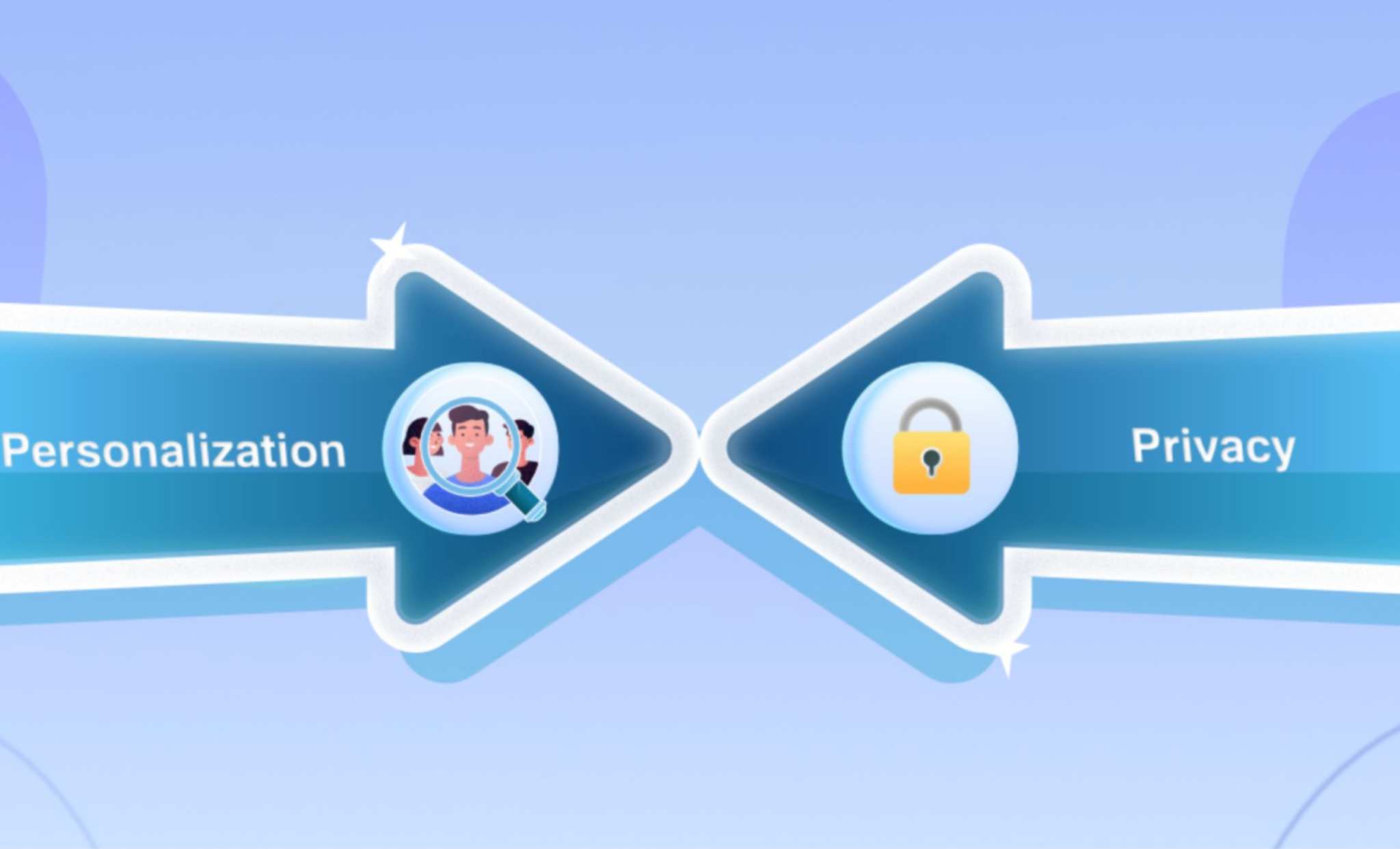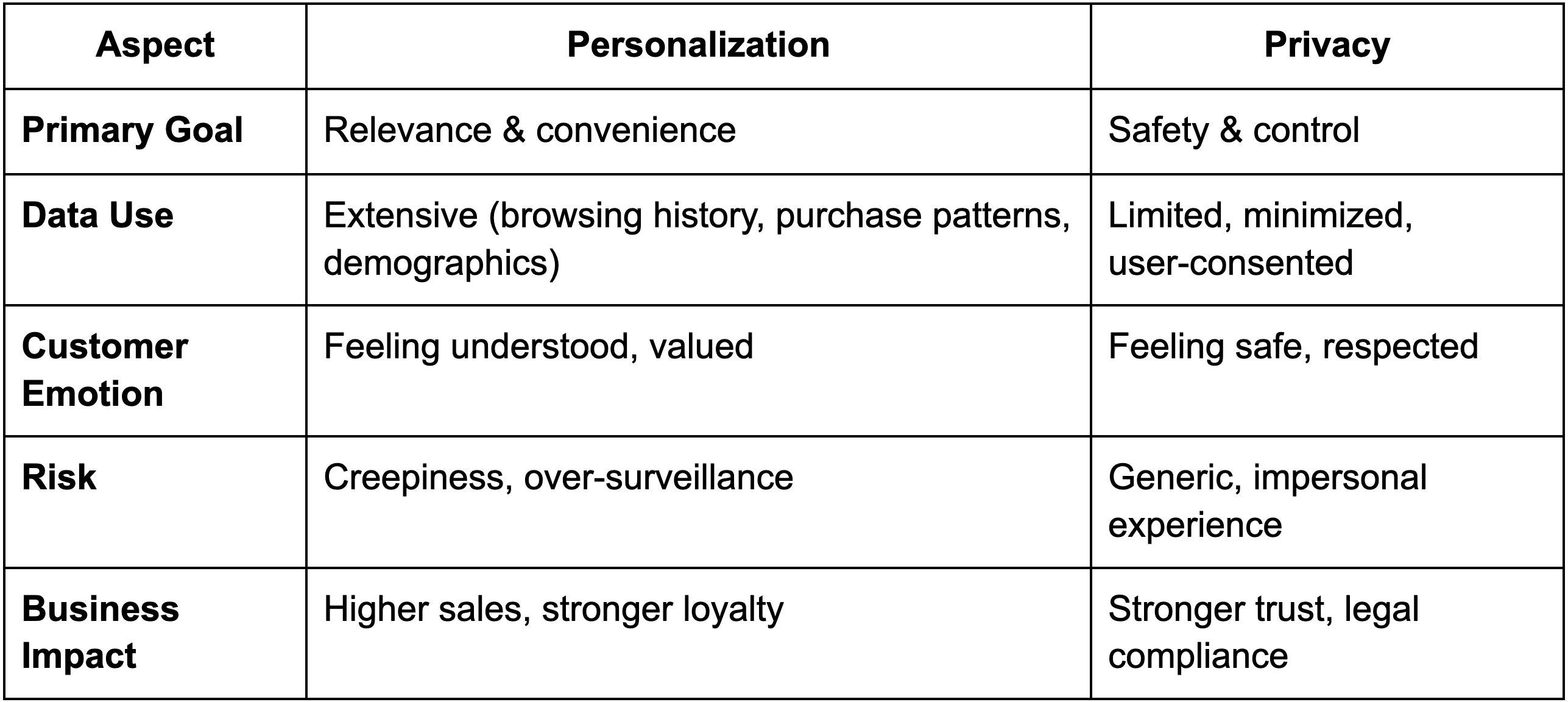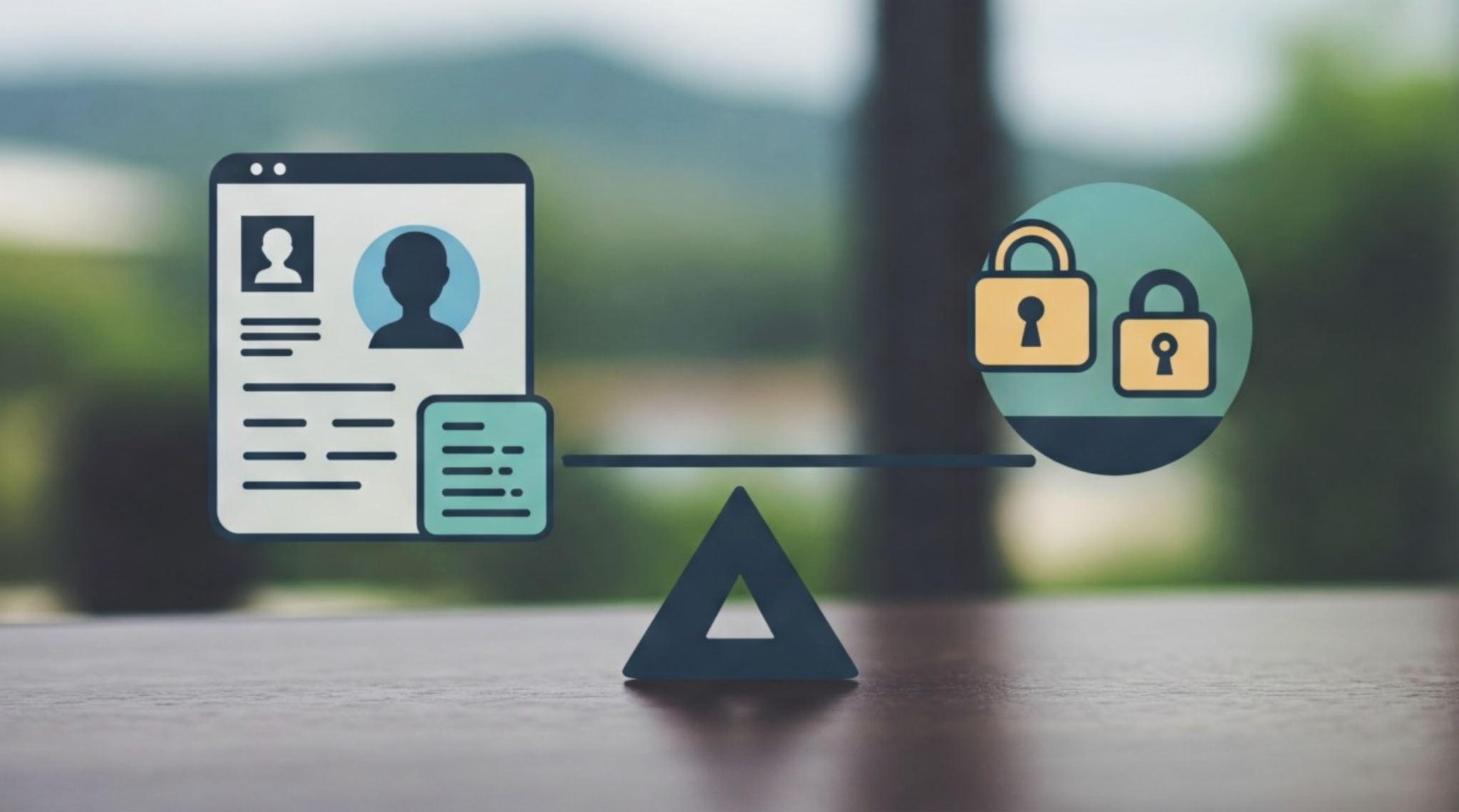
Sign up for a free trial and your first month is $1. Sign up now

In the digital age, every click, scroll, and purchase leaves a trail of data. Businesses are eager to harness this data to deliver personalized experiences, while consumers are increasingly cautious about how much information they share. This creates a natural tension: personalization promises relevance and convenience, while privacy ensures safety and control.
The challenge for modern brands is finding a balance between these two seemingly opposing forces. Lean too heavily on personalization, and you risk creeping out customers. Focus too much on privacy, and your customer experience becomes generic. This article explores the comparisons between personalization and privacy, the paradox they create, and strategies businesses can use to achieve harmony.
Personalization is about relevance. Customers expect businesses to anticipate their needs and offer tailored solutions. Whether it’s Amazon recommending “frequently bought together” items or Spotify curating playlists, personalization helps reduce friction and improve satisfaction.
Key benefits of personalization include:
For example: An online fashion retailer suggesting items that match a customer’s browsing history can increase the average order value by 20–30%.
Privacy is about control. Customers want assurance that their data won’t be misused, leaked, or sold. Respecting privacy builds trust and helps businesses stay compliant with laws like GDPR and CCPA.
Key benefits privacy include:
For example: Apple emphasizes privacy as a product feature. Its “App Tracking Transparency” option lets users decide if apps can follow their activity. This not only builds trust but also differentiates Apple from competitors.

This table shows the trade-off: personalization relies on data, while privacy limits it. Both are necessary, but leaning too far to one side creates problems.
The paradox lies in the fact that customers want the benefits of personalization without the risks to their privacy. On one hand, they enjoy when businesses anticipate their needs and reduce friction in their shopping journey. On the other, they feel uncomfortable, or even violated, when personalization crosses invisible boundaries.
Modern shoppers live in a world where personalization has become the norm. They expect Spotify to generate playlists that match their tastes and Netflix to recommend shows they’ll likely binge. When these experiences are absent, it feels like something is missing.
Yet, the same customers are wary of businesses like Facebook or TikTok, which seem to know too much. When ads are “too accurate,” users question: How much of my personal life is being tracked? This creates a psychological tension: people want convenience without surveillance.
Over-personalization often feels less like a service and more like spying. Imagine searching once for baby clothes and then seeing ads for diapers, strollers, and parenting books everywhere, across your phone, laptop, and social media feeds. Instead of feeling helpful, this experience can feel intrusive, even manipulative.
This happens because:
The opposite problem occurs when brands avoid personalization entirely. Imagine a loyal female customer who has only ever bought skincare and cosmetics from a brand but keeps receiving email campaigns about men’s shaving kits. This irrelevance signals that the brand doesn’t “see” her as an individual, making the experience frustrating and impersonal.
Consequences include:
For example, many mass email blasts from retailers suffer from this problem, where every customer gets the same discount offer regardless of past interactions.
When we compare the two extremes, the paradox becomes clear:

The real opportunity for businesses is not choosing one side but blending both. This means:
When this balance is achieved, customers feel both:
This equilibrium is what transforms a one-time shopper into a loyal, lifelong customer.
Takeaway: Transparency supports both personalization and privacy.
Comparative insight: Both sides win when customers can actively shape their own experience.
Balance: Move toward zero-party data—information customers willingly provide (e.g., quiz answers, wishlists).
Comparative solution: Use smart algorithms that can do more with less data, leveraging anonymized patterns instead of personal identifiers.
Both personalization and privacy collapse without security. Even the most brilliant personalization strategy fails if customer data is exposed in a breach. Similarly, privacy promises mean nothing without robust encryption and monitoring.
Comparative insight: Security is the foundation where personalization and privacy meet.
Technology is often seen as the source of the conflict, but it also provides solutions.
Comparative lens:
Example: Google is experimenting with “Privacy Sandbox,” a way to show relevant ads without exposing individual user identities. This is a direct attempt to balance personalization with privacy.

Amazon is the poster child for personalization. Its recommendation engine is deeply integrated into the customer journey, from homepage suggestions to checkout upsells. This drives revenue but sometimes sparks privacy debates over how much data Amazon collects and uses.
Lesson: High personalization can boost sales but must be paired with strong transparency and security.

Apple markets itself as privacy-first. Features like Mail Privacy Protection or app tracking controls show that privacy is not just compliance, but it’s a selling point. However, this sometimes limits personalization within Apple’s ecosystem compared to competitors like Google.
Lesson: Strong privacy can become a competitive advantage, even at the expense of hyper-personalization.

Netflix uses personalization to recommend content but keeps privacy boundaries by focusing mainly on user behavior within its platform rather than external data. This creates a balance where customers feel the benefits without significant privacy concerns.
Lesson: You don’t need all the data, just need the right data.

Businesses must constantly assess which side they’re leaning toward and adjust accordingly.
Personalization and privacy are not enemies; they’re two sides of the same coin. Personalization delivers relevance, while privacy ensures respect. Without personalization, customer experiences become bland. Without privacy, customer trust collapses.
The comparative truth is clear:
Brands that thrive in the coming years will not choose one over the other, but they will create ecosystems where personalization is powered by customer-consented, well-protected data. When customers feel both understood and safe, loyalty naturally follows.